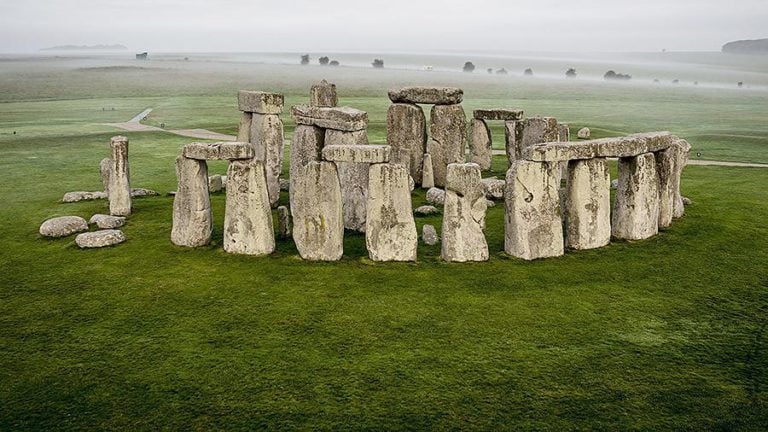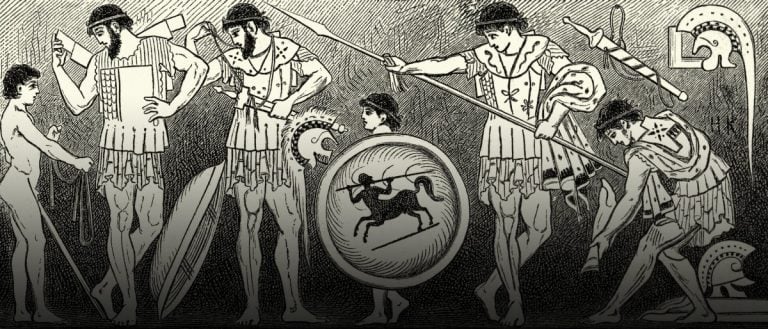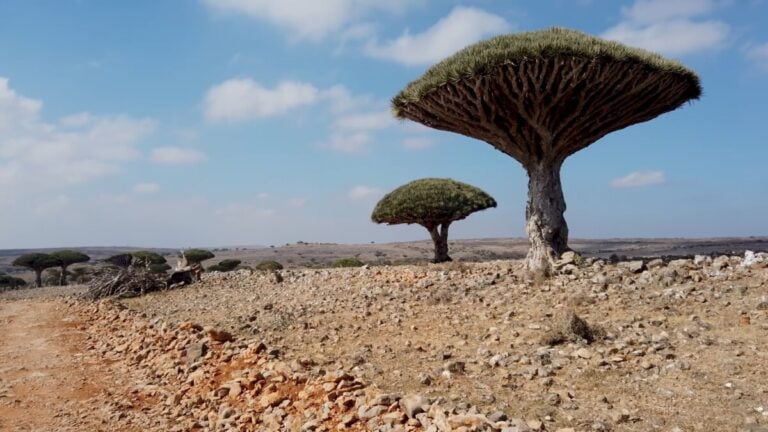Muhammad was a religious Arab, social and political leader. The beginning of a new religion, which Islam became in the seventh century, is connected with his personality. According to Muslims, Muhammad was a prophet inspired by Allah to proclaim and confirm the monotheistic teachings of Adam, Abraham, Moses, Jesus and other prophets.
The Arabian Peninsula covers an area of more than 2.5 million km². It stretches between the Red Sea, the Arabian Sea and the Persian Gulf. Already in antiquity, Arabia was the crossroads of important trade routes that led from the Roman Empire, Egypt and Abyssinia. Based on trade, Mecca grew in the land called Hijaz. The city also developed a center of worship associated with the temple of Al-Kaba, which, according to legend, was created by Adam and then rebuilt by the prophet Abraham and his son Ishmael. Inside it is the Black Stone, originally dedicated to pre-Muslim gods.
Although Christianity and Judaism had a strong influence on the Arabian Peninsula, many places, including Medina, still believed in many gods. Belief in different gods also helped each Arab tribe maintain its own identity, hence the limited influence of Christianity and Judaism.
However, his mother died when Muhammad was six years old. He was brought up by his grandfather and then by his uncle Abu Talib, who was a merchant. This gave him the opportunity to accompany trading expeditions to other countries, where he became acquainted with a different culture and a different approach to religion.
After marrying the wealthy widow Khadija, with whom he worked, his financial situation improved so much that he was able to devote time to religious contemplation. One night in the year 610, while on Mount Hira near Mecca, he was destined to experience the first revelation. According to the story of Muhammad, the archangel Gabriel (Jibril) appeared to him and gave him the first verses of the Koran. These revelations were to accompany Muhammad to the end of his life.
The words transmitted were: “Proclaim in the name of your Lord, Who created! He created man from a clot of clotted blood! Proclaim!”
Basic Principles of Islam
Accordingly, Muhammad decided to make his revelations public and proclaim them as a Prophet. First of all, he preached that there is only one God (Allah) and that the Last Judgment awaits everyone. In addition, he formulated the basic duties of an Islamic believer (submission to the will of Allah), namely: prayer, faith in the one God and helping the orphans and the poor. He also emphasized the equality of all before God, that is, Allah (the One God). Muhammad’s main goal was to return to the original Abrahamic religion, which, in his opinion, was distorted.

The contents of the revelations were written down in the form of a book called the Quran. Muslims believe that its content reflects the words spoken by Allah and is evidence of His actions on Earth. It consists of 114 chapters called suras.
The theses presented by Muhammad did not meet with a positive response among the aristocratic sections of Mecca, in contrast to the poorer residents of the city. It was among the less wealthy that the number of Muhammad’s followers grew rapidly. This was against the interests of the local nobility, who profited from the pilgrimage to Al-Kaba, where many idols were worshiped at that time. Muhammad, meanwhile, was a supporter of monotheism. In addition, the principles of equality before God, which he preached, as well as the growth in the number of his followers among the lower strata, hurt the aristocracy.
Because of this, Muhammad no longer felt safe in Mecca, and his wife also died in 619. Therefore, forced by the situation in 622, he went to Jasrib (today’s Medina, which means “city of the prophet”). The followers of Allah call the flight of Muhammad from Mecca to Medina the hijra. From that moment on, the years are counted according to the Muslim and Iranian calendars.
Muhammad in Medina
Muhammad’s teachings found more fertile ground in Medina. Its social structure was also different. Its inhabitants were mainly engaged in agriculture, and the aristocracy was weaker. Jews also lived in the city, so the inhabitants of Medina were familiar with the concept of monotheism. In Medina, Muhammad issued a document that guaranteed the followers of all religions respect for their traditions. However, the Prophet stipulated that in the absence of agreement, the decisive vote would belong to Allah or his Prophet. The problem with accepting Muhammad as a prophet was that some Jewish tribes were expelled from Medina.

The number of Muhammad’s followers grew rapidly. Medina can be considered the first Muslim community. With the help of his new followers, the Prophet began to raid the caravans going to Mecca, where the Quraysh ruled. In 624, he participated in the key battle for the emerging Islam at Badr. In the Badr Gorge, he ambushed a well-guarded caravan heading for Mecca. The victory and huge booty greatly strengthened the position of Muhammad.
A year later, the people of Medina took revenge on the followers of Allah and defeated them in the battle of Uhud. Muhammad was wounded during the battle. However, the consequence of the battle was not the occupation of Medina by the victors. Therefore, the Prophet was able to continue his work. In 627, the Meccans gathered a significant force and set out for Medina. They wanted to capture the city in order to put an end to the activities of Muhammad. Surrounding Medina with a moat, by order of the prophet, proved to be an impenetrable obstacle for the troops from Mecca. Therefore, after a siege that lasted several days, Muhammad’s opponents lifted the siege.
After this victory, Muhammad sent a trusted Abd ar-Rahman to the city of Dumat al-Jandal in Syria, who surrendered without a fight and made an alliance with the Muslims. This alliance was supplemented by an agreement with the tribes living in the area of Medina. However, Muhammad did not take military action against Mecca, but went on a pilgrimage to perform the ritual of bypassing Al-Kaba. This led to a ten-year truce between Mecca and Medina, as a result of which Muhammad received the right to make the pilgrimage the following year. In 629, the pilgrimage was accompanied by the surrender of Mecca, which recognized the supremacy of Muhammad. He entered his native city on January 11, 630. He made a ritual round of Al-Kabah, thereby showing that he intends to respect local traditions. However, in the temple itself, he destroyed the images depicting the old deities.
Muhammad’s activities led to the extension of his sovereignty over most of Arabia. Medina became the political capital of the Muslim state, and Mecca became the religious one. Of course, not all tribes immediately adopted Islam. Muhammad gave protection in exchange for support, without the need to convert to Islam. The only obligation was to pay the tax to Medina. The number of Muslim followers grew steadily.
Muhammad died on June 8, 632 in Medina at the height of his power, leaving no descendants. After his sudden death, the rank of caliph, or successor of the Prophet, was established. The first caliph was Abu Bakr, who was the father of one of Muhammad’s wives. After the death of his son-in-law, he said to the mourning followers:
“O people! If you worship Muhammad, Muhammad is dead; if you worship God, God lives.”
The people of Medina and Mecca had just chosen Abu Bakr as the successor of the Messenger of God. Thus was created the first caliphate, or Islamic state, whose leader was the caliph. The beginning of the Arab territorial expansion, which lasted more than 100 years, is connected with the reign of Abu Bakr. During this period, the Arabs mastered, in particular, the Persian Empire, Egypt, Cyprus, Armenia, the Maghreb and, finally, the Iberian Peninsula. The expansion only ended when Charles the Hammer defeated the Umayyads at the Battle of Poitiers in 732. However, the reconquista in Spain continued until 1492.
















